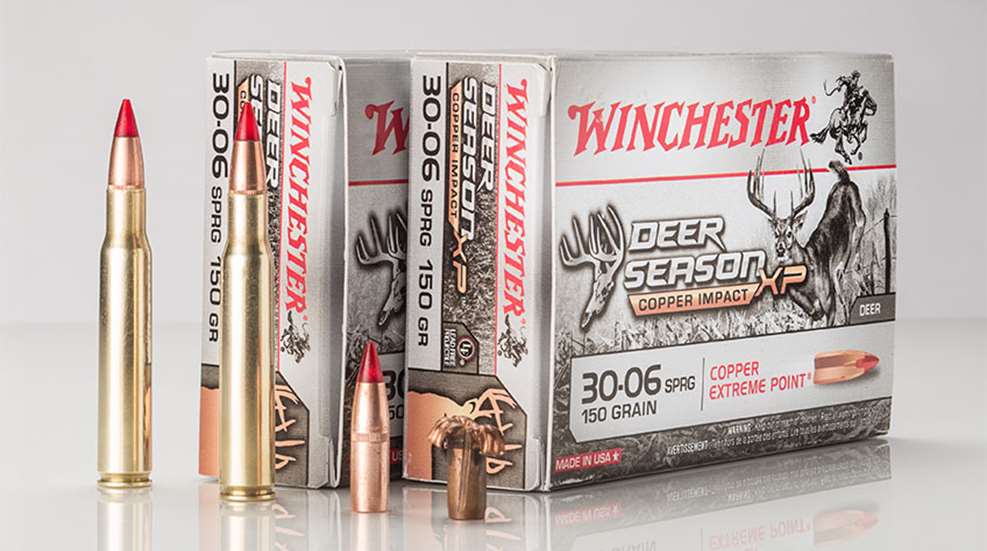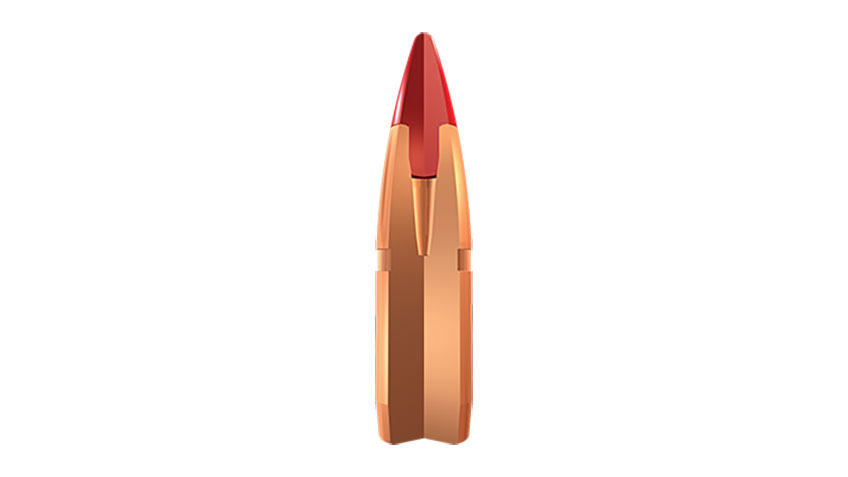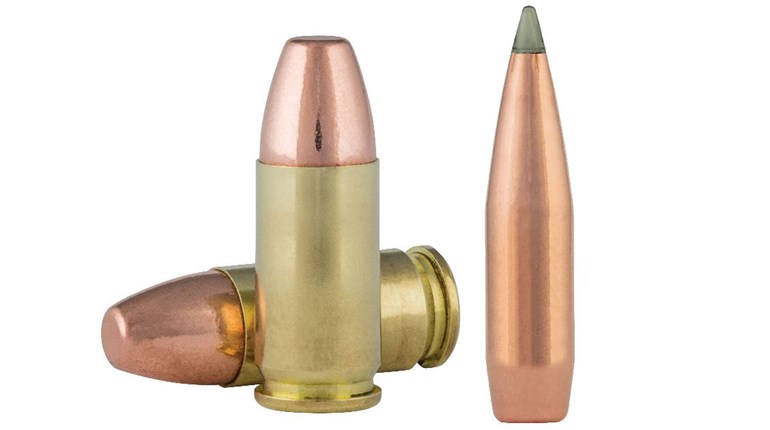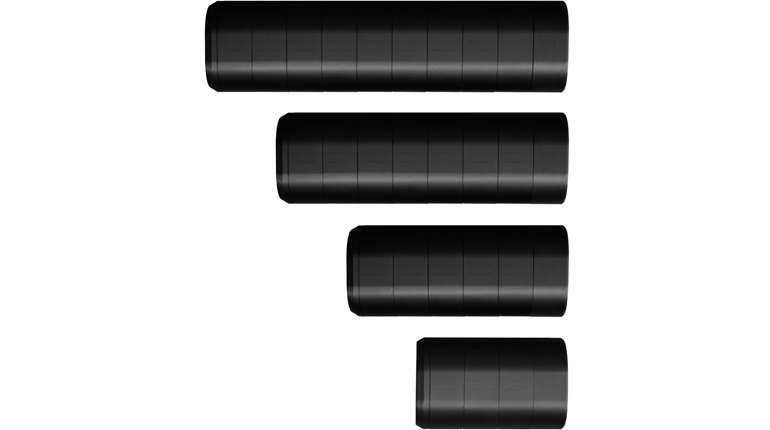
In the ever-relentless pursuit to build a better bullet, ammunition manufacturers such as Winchester have recently trended toward “narrow-objective” loads: specialized ammo created to perform a specific task. And what task could be more special to American hunters than deer hunting? Deer are by far the most sought-after game animals in North America, and a few years ago Winchester decided to provide hunters with ammunition specific to the task of dropping whitetails, blacktails and mule deer: Deer Season XP.
The line’s XP (Extreme Point) bullet utilizes an oversized polymer tip to accelerate expansion, and form what Winchester calls a “large impact diameter” where the tip meets the jacket and core. The bullet’s tapered jacket is thin at the nose to promote immediate upset, but it becomes quite thick as it approaches the base to check expansion and retain weight. The lead-core XP bullet delivers massive amounts of trauma in short order, creating a heavy blood trail if the deer doesn’t drop where it stands.
New this year, Winchester takes the tip and large-impact-diameter design of the XP and incorporates them into a deeper penetrating, all-copper bullet to introduce Deer Season XP Copper Impact. Aside from being a lead-free alternative for those hunting amidst such regulation, solid copper bullets hold up better during travel though tissue and bone than jacketed lead-core bullets, retaining more weight and thus increasing penetration. Yes, copper is less dense than lead, but an increase in bullet length makes up for the weight loss.

Through my chronograph the 150-grain XP Copper Impact .30-06 Sprg. load produced an average muzzle velocity of 2851 fps from a 22-inch barrel. That bullet will maintain a velocity of about 1970 fps at 400 yards, which is plenty fast enough to cause expansion with the aid of the tip (colored red to differentiate it from the original). Testing performed by the Winchester team that developed XP Copper Impact showed expansion down to velocities approaching 1800 fps, representing a range of approximately 500 yards with the 150-grain .30-06 load.
Such expansion is a product of two design elements: the bullet’s large polymer tip and the deep nose cavity it hides. Upon impact the tip is forced into the cavity, immediately initiating expansion. Skiving in the bullet nose aids in a consistent four-petal split, but the monolithic boattail bullet otherwise stays intact for almost 100 percent weight retention. It penetrates deep while the rapid expansion maximizes tissue damage and energy transfer. An upset 150-grain, .30-caliber bullet recovered from ballistic gelatin shot at 100 yards had expanded to .688 inch, more than twice its original diameter, and had penetrated 27 inches into the gel.
How does Deer Season XP Copper Impact perform in the field? Devastatingly well. Despite a painful Missouri chill while shooting the 150-grain .30-06 loads from a Winchester XPR rifle, I poked holes in paper that formed groups measuring about 1 inch at 100 yards. Real performance was tested on big rutting whitetails during the week that followed. I shot a mature 8-point at 40 yards, and he ran maybe 6 more before dropping like a bad habit. The blood trail, visible at that distance with the naked eye, wasn’t necessary for recovery. A doe at 109 yards didn’t fare any better. The quartering-away shot provided the perfect opportunity to slip the copper bullet behind her front leg, and she was down on impact. Both shots resulted in complete pass-throughs, and extensive tissue damage along the length of both wound channels was undeniable once the field-dressing began.
To say we are living in the heyday of ammunition is an understatement. Whether it’s in the production or development, new technology or materials, the specialized focus of current ammunition delivers better tools for hunters. Deer Season XP Copper Impact hits hard, expands consistently and delivers massive amounts of trauma as it penetrates deep. Suitable for much more than deer, it should be a welcome complement to any hunter’s rifle.
Technical Specifications
• Caliber: .243 Win., .270 Win., .30-06 Sprg. (tested), .300 Win. Mag.
• Bullet: 150-gr. Winchester Copper Extreme Point
• Ballistic Coefficient: .387
• Muzzle Velocity: 2920 fps (advertised w/24″ barrel)
• Muzzle Energy: 2,839 ft.-lbs. (advertised)
• MSRP: $26-$32 per 20-rnd. Box; winchester.com




































